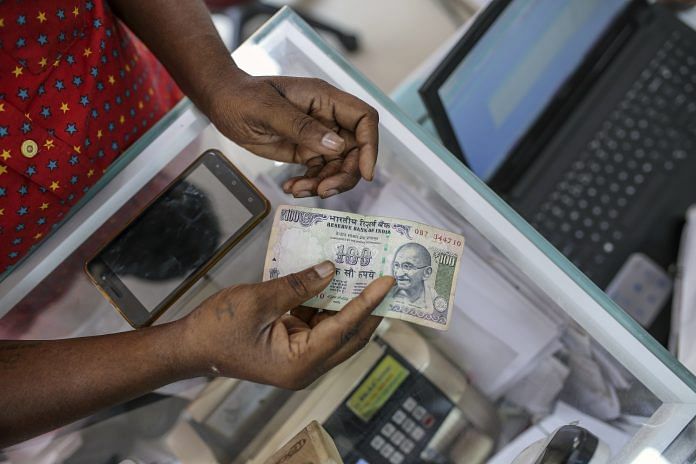RBI has allowed banks to dip further into statutory liquidity reserves to help them meet their liquidity coverage ratio needs after Modi govt raised custom duties.
Mumbai: India upped the ante in its efforts to restore investor confidence, with the central bank taking measures to ease liquidity for lenders a day after the government raised import tariffs to support the battered rupee.
The Reserve Bank of India allowed banks to dip further into statutory liquidity reserves to help them meet their liquidity coverage ratio needs, a step that would boost cash available for lending. On Wednesday, the government raised import taxes on $12 billion of goods as it seeks to narrow the current-account deficit from a five-year high.
The coordinated policy moves come as Asia’s third-largest economy faces a barrage of bad news, from elevated oil prices and a tumbling rupee to the debt crisis at a lender and a cash crunch in the banking system. Foreigners have pulled $8.6 billion from local shares and debt this year, adding to the weakness in the currency that’s already Asia’s worst performer. The measures may not go far in lifting the despondency that has settled over the markets.
“The measures announced are positive on the margin in the short term but not really game-changing stuff to reverse the trajectory of the rupee and the financial markets,” said Ashish Vaidya, head of trading at DBS Bank Ltd. in Mumbai.
READ: India’s RBI Announces Measure to Ease Bank Liquidity Shortage
The benchmark S&P BSE Sensex gave up early gains and traded down 0.1 percent at 12:19 p.m. in Mumbai, set to round out its worst month since February 2016. The yield on the benchmark 10-year bond was little changed at 8.07 percent, after declining five basis points on Wednesday. The rupee was marginally changed at 72.64 per dollar.
Recent measures to shore up the currency have underwhelmed and pressure is building on the authorities to do more to curb the yawning trade- and current-account deficits. The move to raise import tariffs on 19 items — from air-conditioners to jet fuel — follows similar steps taken by Indonesia, which also runs a current-account gap. The Southeast Asian country has delayed import-heavy infrastructure projects and boosted taxes on imports of luxury goods.
“The additional duties will not serve to reduce the current-account deficit by more than 0.2 percent of GDP,” said Teresa John, an economist at Nirmal Bang Equities Pvt. The increases will likely be countered by the recent jump in oil to above $80 a barrel, she said, forecasting the rupee to likely decline further.
Elevated prices of oil — India’s top import — and a weak rupee are likely to fan inflationary pressures, pushing the central bank to raise rates as early as next week. The authority has raised borrowing costs twice this year.
“The monetary policy committee could still play its part in moderating the current-account deficit by extending a tightening bias,” Citigroup Inc. economist Samiran Chakraborty wrote in a note. There’s a 65-75 percent probability for a 25-basis point hike next week, he said.-Bloomberg






